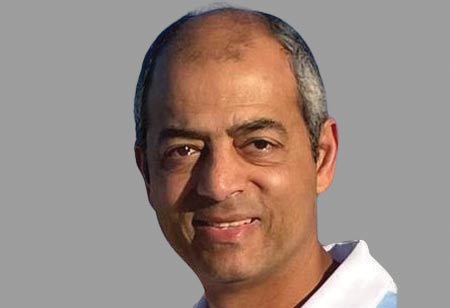

Thank you for Subscribing to Gov Business Review Weekly Brief

Professional Journey and Key Experiences in City Planning
I have always been passionate about civil engineering. My academic journey began with a bachelor’s degree in structural engineering, followed by a master’s degree in construction management and ultimately, a doctorate in transportation engineering. While all my degrees fall under the broad umbrella of civil engineering, they each focus on different aspects of the field. Early in my career, I worked in various domains, including design, construction management, bidding and estimation, field supervision and traffic engineering. My experience extends across both the consulting and contracting sectors before I transitioned to public service with the City of Rockville. Over the past 25 years, my time with the City of Rockville has had the greatest impact on my professional growth. I began as a traffic engineer and later advanced to my current role as Chief of the Traffic and Transportation Division. Working for the city has been incredibly rewarding, as it allows me to contribute directly to the safety and efficiency of our transportation infrastructure. Our team is deeply invested in the well-being of the city and its residents. We don’t just identify problems—we develop solutions, design them, implement them and witness their tangible impact on safety, quality of life and the overall public good. Key Trends, Technological Advancements and Challenges in City Development Throughout my 25-year tenure, I have witnessed significant technological advancements in transportation. In the early 2000s, the introduction of countdown signals and Accessible Pedestrian Signals (APS) was a major step forward and we undertook the challenge of upgrading all 48 city traffic signals to incorporate these features. Red-light and speed cameras were also introduced during this period, improving traffic enforcement and safety. Over the years, we have implemented speed feedback signs, Rectangular Rapid Flashing Beacons (RRFBs) to enhance pedestrian safety and Battery Backup Systems (BBS) to ensure continued traffic signal operation during power outages. Currently, we are in the process of replacing all city streetlights with LED lighting, which will improve road visibility while promoting environmental sustainability. Looking ahead, the Bus Rapid Transit (BRT) system will play a crucial role in urban mobility, and traffic signals will need to accommodate queue-jump technology to enhance efficiency. Bicycle detection technology is also evolving, allowing better integration of bike lanes within urban infrastructure. The increasing adoption of electric vehicles (EVs) will necessitate widespread deployment of EV charging stations in future city planning. Along with this, autonomous vehicles will soon influence urban transportation policies, requiring significant adjustments to existing infrastructure.We don’t just identify problems—we develop solutions, design them, implement them and witness their tangible impact on safety, quality of life and the overall public good.
I agree We use cookies on this website to enhance your user experience. By clicking any link on this page you are giving your consent for us to set cookies. More info